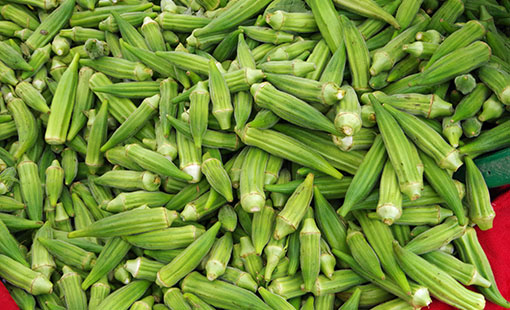
All About Okra
While many associate okra with summertime in the Southeastern U.S., it’s actually grown all over the world. It’s an essential ingredient in many types of cuisine, including those of the Southeastern U.S., parts of Africa, the Middle East, the Caribbean and South America.
This hot-weather crop means something different to everybody. Regardless of how you enjoy it, there’s no denying okra is a versatile vegetable that’s surprisingly high in nutritional value. Here’s everything you need to know about okra.
What Is Okra?
These fuzzy green veggies are actually the immature seed pods of the Abelmoschus esculentus or okra plant. They also go by the names “gumbo” and “lady’s fingers,” depending on where you are.
Okra grows best in hot, humid climates, with India being the leading okra producer. While we might know this plant as a vegetable for culinary purposes, botanically it’s a fruit, as it’s the seed-bearing part of the plant.
Okra can be divisive for its slimy texture. It contains mucilage, which is a naturally occurring substance that acts as a thickener for stews or gumbos. While some are off put by this, others find its unique texture perfect for roasting or frying. Quick roasting and dry heat can help minimize the sliminess.
It also has a peach-like fuzz on the exterior and a mild, somewhat grassy taste. Okra is commonly used in soups, canning, frying, roasting or boiling.
Okra Nutrition
While frying is not the best way to prepare vegetables for health, you can still reap the benefits of okra even in fried form. Okra is rich in fiber and protein and low in calories. Vegetables often lack significant amounts of protein, making okra unique in this aspect. Plus it’s chock full of vitamins (including vitamin C) and antioxidants.
How to Cook Okra
No matter which way you choose to prepare it, okra will need to be rinsed and patted dry before cutting or slicing. Depending on which cooking method you intend to use, okra can be cut into rounds, sliced lengthwise, or cut diagonally. If you’re planning to cook your okra on low heat, like for gumbo, you can also soak it in vinegar before cooking to help reduce the slime.
Okra is crunchy when cooked quickly but becomes almost mouthwateringly tender when slow-cooked. For okra that is crisp and crunchy, try roasting, frying or grilling to help minimize the slimy texture and bring out the grassy flavor of okra. If you’re looking for a melt-in-your-mouth okra that acts as a thickening agent, try cooking it low and slow in a stew or gumbo.
Are you looking to get the best of both worlds? Sautéed Okra still gives you that moist and tender texture but with just a hint of crispness. Okra and tomatoes are classic examples.
How to Store Okra
Okra pods can bruise somewhat easily, so you have to store them with care. Fresh okra is best stored in the fridge’s vegetable drawer, either wrapped in a paper towel or in a loose paper bag. Wait to wash it until you’re ready to cook it. Okra will last up to four days in the fridge.
To preserve okra long-term you can either can it or freeze it. To freeze okra start by blanching the pods in boiling water and then shocking them in an ice bath. You then may either cut the pods prior to freezing or freeze the whole pods by placing them on a parchment-lined baking sheet in the freezer. Once the okra is frozen, transfer it to a freezer bag and save it for up to a year.
Information courtesy of AllRecipes.com

 Adams Fairacre Farms
Adams Fairacre Farms